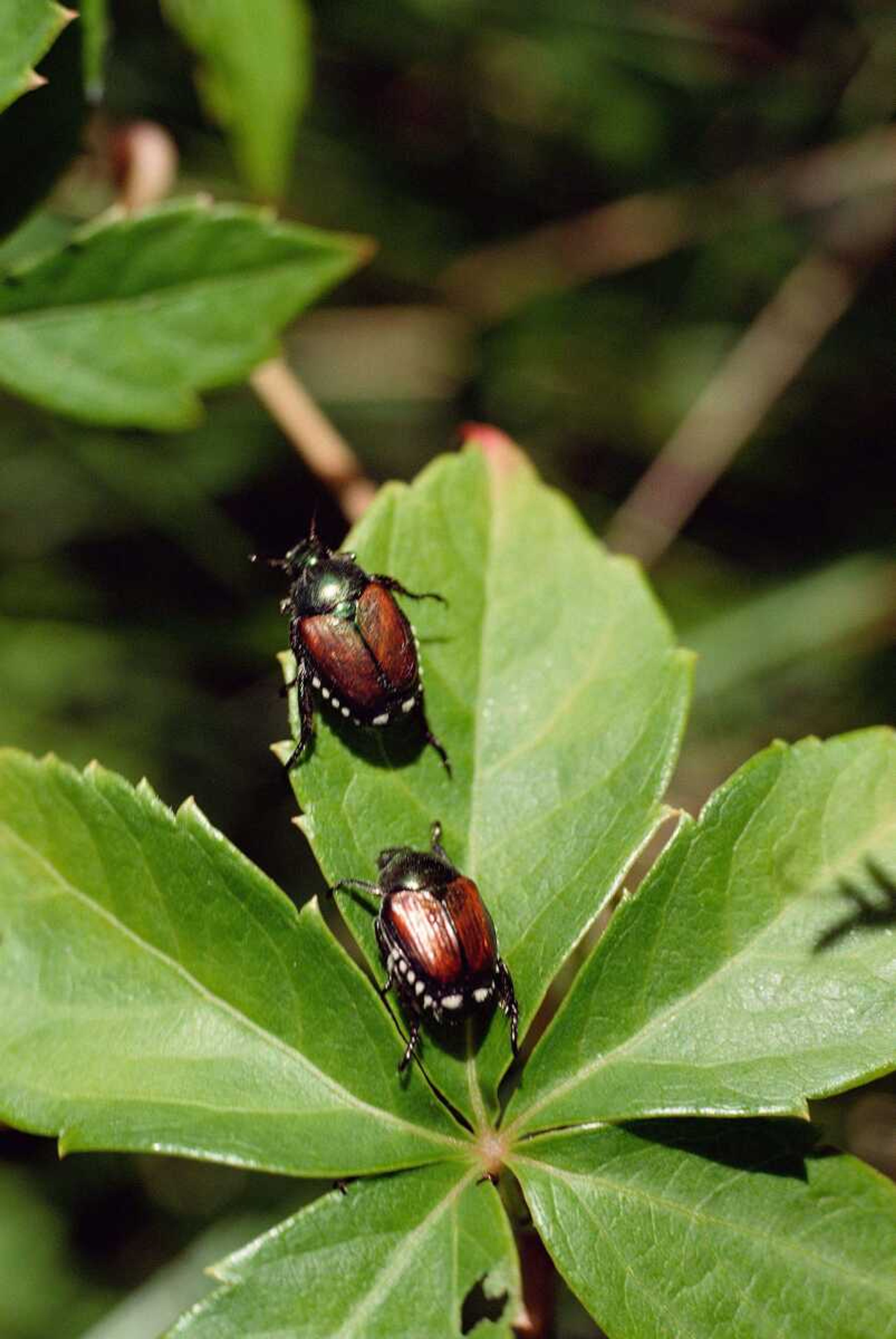Dr. Grow: Japanese beetles can cause a lot of damage if not properly controlled
Seventy-five percent of the questions I have received during the last three weeks from Southeast Missouri gardeners concern Japanese beetles. I have written about and discussed them at length over the last two years, but I sense more concern, anger, angst, anxiety, etc. this year among gardeners than ever before. So I thought I should revisit the subject...
Seventy-five percent of the questions I have received during the last three weeks from Southeast Missouri gardeners concern Japanese beetles.
I have written about and discussed them at length over the last two years, but I sense more concern, anger, angst, anxiety, etc. this year among gardeners than ever before. So I thought I should revisit the subject.
Japanese beetles (Popillia japonica Newman) were first detected in New Jersey in 1916. This beetle, introduced from Japan, has since found America to its liking and is expanding its population and inhabiting territory. It found its way west of the Mississippi and into Southeast Missouri about four years ago. Since then, the beetle has been a nuisance to local gardeners.
Japanese beetle adults emerge from soil starting in June and continue through July.
Both male and females are voracious eaters of foliage and flowers of more than 300 different plants. When one beetle finds a plant it considers a delicacy, it releases an aggregation pheromone (odor) that attracts other beetles. This is why you usually find a horde of beetles munching on one particular plant.
In addition, females release a sex pheromone to attract males. After eating and mating for one or two days, the female burrows into the soil around the plant she has been feeding on, and then deposits one to five eggs at a depth of 2 to 4 inches. She then returns to the plant and continues feeding and mating. Feeding, mating and egg-laying continues until she has laid 40 to 60 eggs. Most of the eggs are laid before mid-August.
Within eight to 14 days, the eggs hatch into C-shaped white grubs. These grubs feed on plant roots, increase in size and molt three times (each stage is called an instar) before mid-October. These grubs survive winter by digging deeper into the soil and hibernating there.
In the spring, grubs return to the surface and develop into pupae.
Adults hatch from the pupae and emerge from the soil in June. The cycle begins again.
Japanese beetles damage plants in two ways. First, the adults eat plant flowers and foliage. They also eat leaves, particularly the tissue between leaf veins. The result is a leaf that looks a skeleton. Because the beetles feed in hordes, a plant can be devoured in less than a day.
The larvae (grubs) will cause damage by eating plant roots. If the concentration of grubs is five to 10 per square foot, they can eat so many roots that they kill the sod they are under.
Control of Japanese beetle should be a three-pronged attack. First, spray the affected and neighboring shrubs with an insecticide that kills by ingestion. You can use spinosad, permethrin, malathion, sevin or thuricide. Keep in mind that some of these insecticides will not kill the beetle instantly. If the infestation of beetles in the area is bad, you may have to spray every five to 10 days to kill new beetles coming into your landscape.
You should also place traps in your lawn to attract the beetles away from your landscape plants. Make sure that you place enough traps in your landscape to actually attract the beetles away from your plants. You should have one trap for every 1,500 to 2,500 square feet of landscape area. If you only place one trap in your landscape, you will succeed in attracting other beetles to your landscape but not trapping them. You will actually make your situation worse.
Finally, spread an insecticide such as imidacloprid on the lawn and shrub beds of your landscape in August. This application will reduce any potential lawn damage that may show up in the fall. It may help reduce adult infestation next spring, but it will not eliminate the potential problem.
You may also make biannual applications of milky spore disease to your lawn and landscape beds for two to three years. Several applications of the product will build a population of the fungus high enough that grubs will not survive in treated soil.
Keep in mind that Japanese beetle populations have been moving westward since 1916. The beetles are here to stay unless some unknown agent or environmental condition eliminates the population. Load your weapons because this war is going to last a long time.
Send your gardening and landscape questions to Paul Schnare at P.O. Box 699, Cape Girardeau, MO 63702-0699 or by e-mail to news@semissourian.com.;
Connect with the Southeast Missourian Newsroom:
For corrections to this story or other insights for the editor, click here. To submit a letter to the editor, click here. To learn about the Southeast Missourian’s AI Policy, click here.










